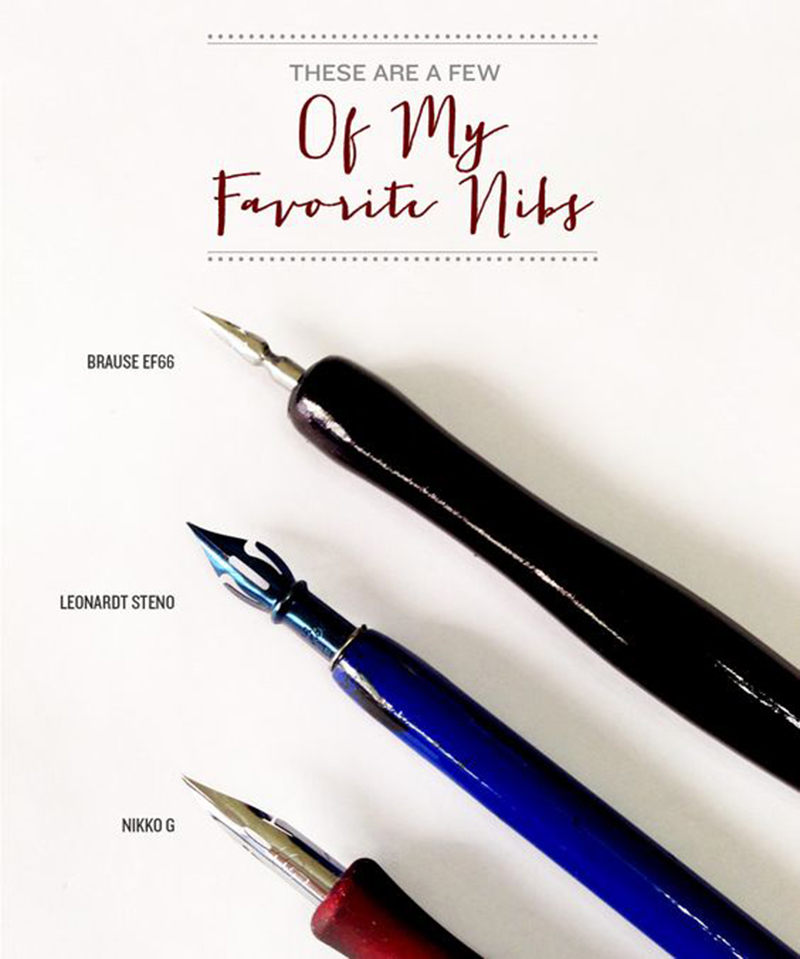
I remember when pointed pen calligraphy was all new to me. I follow the blogs of inspiring calligraphers and usually ask them what nib they used on a certain artwork. I will order the same nibs they used and excitedly prepare them before dipping in glorious black ink. ‘Aaaah’, I thought, ‘this will make my calligraphy as lovely as {name of amazing calligrapher here}.’
Well, I was wrong. First, the nibs that worked perfectly with one person doesn’t mean it would work perfectly with me as well. The Hunt 101 for example, has been an all-time favorite of many but it always snags the paper on my upstrokes. It always makes that gritty sound no matter how light my pressure is. Second, even if the nib does work smoothly, I still won’t be able write like Laura Hooper. Uh, maybe not ever, but you get the picture. I wanted to be able to do the flourishes and swirls right away when I didn’t know the basics yet. So I learned that it takes A LOT of practice before I get a certain style going. Those brilliant calligraphers out there were all right about that.
I have been getting several queries about the nibs that I’ve been using and I feel that I need to share my favorites. The list usually changes but currently, here are a few of my favorite nibs which I hope will write smoothly with you.
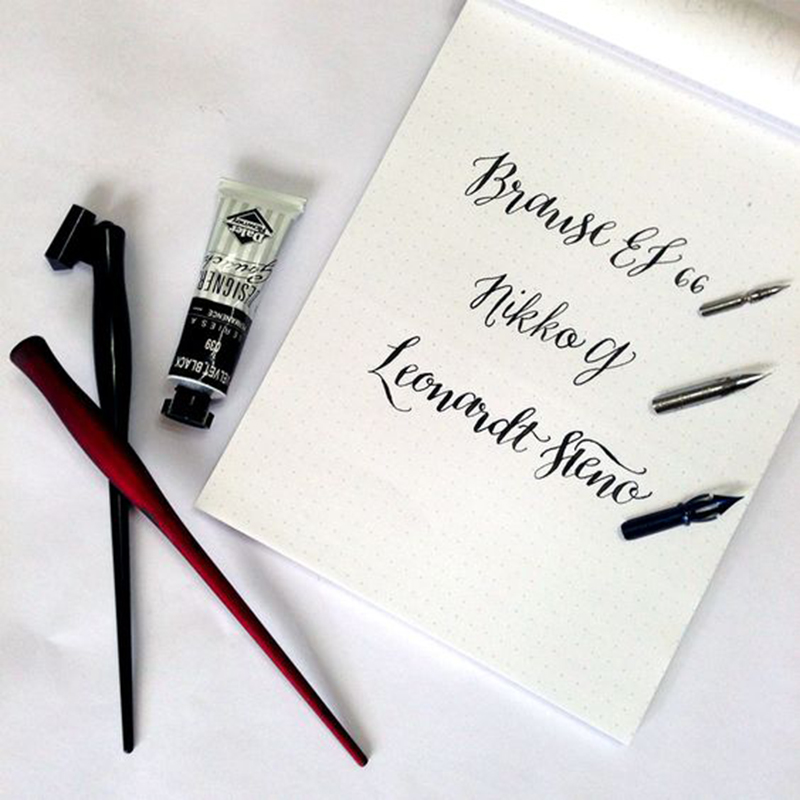
The Brause EF66 has long been on my favorites list. It may be tiny, but don’t judge it by its size! It makes gorgeous thicks and thins! It may scratch your paper a little bit during upstrokes, though, but this usually happens when I use a slightly coarse sheet. I usually have this problem with white ink on black paper. Because the paper is not smooth, I have to hold my pen feather-light during those tough upward strokes (that I would avoid if I could). Ink may get stuck underneath the nib, too, so make sure you give it a good soak and brush when you’re done with it. Having said all these, the EF66 gives gorgeous results. I use it everytime there’s a snail mail to write. Lately, I’ve been using it for wall art, too.
Now this is the best nib for beginners, in my humble opinion. The Nikko G is a very long-lasting Japanese nib. I use this in doing drills which have been quite often lately, and I’d say this nib can take a beating and still give good results! It is quite stiff with a medium flex and works great even for the heavy-handed. I love its size and its sharp point. I don’t lose it like I do with the EF66 (like one moment I know it was supposed to be there, and another moment passes and it was gone?) and the sharp point promises a very fine hairline. Put more pressure on the downstrokes and you’ll have lovely swells.
The Leonardt Steno (previously called Hiro 40) is a huge nib as far as nibs go. It’s easy to handle and much like the Brause Steno Blue Pumpkin when it comes to weight and size. It comes in a pretty blue color and used to be the go-to nib of stenographers, thus the name ‘Steno’. This nib’s tip is quite pointed which makes hairlines quite thin, but it writes smoothly and rarely skips. It produces defined line variations and is quite soft (be careful with the flexing!) that’s why this one right here is one of my favorites if I need to write bigger letters.
There you go! I linked all three nibs to Paper & Ink Arts because that’s where I order most of my nibs from. International shipping is quick and they have almost everything I need (and so much more). If you’re in Singapore, you can also check out the friendly people at Straits Commercial Art Co. or Overjoyed (which has Brause nibs).
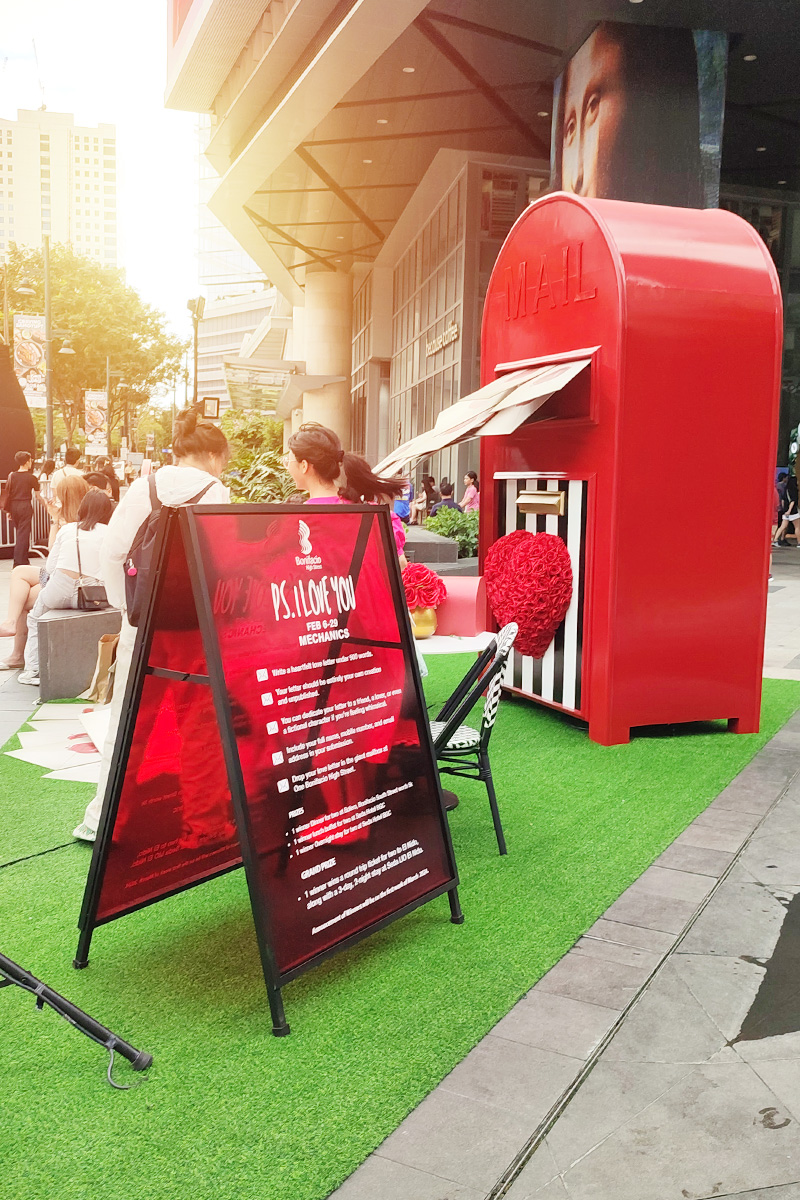

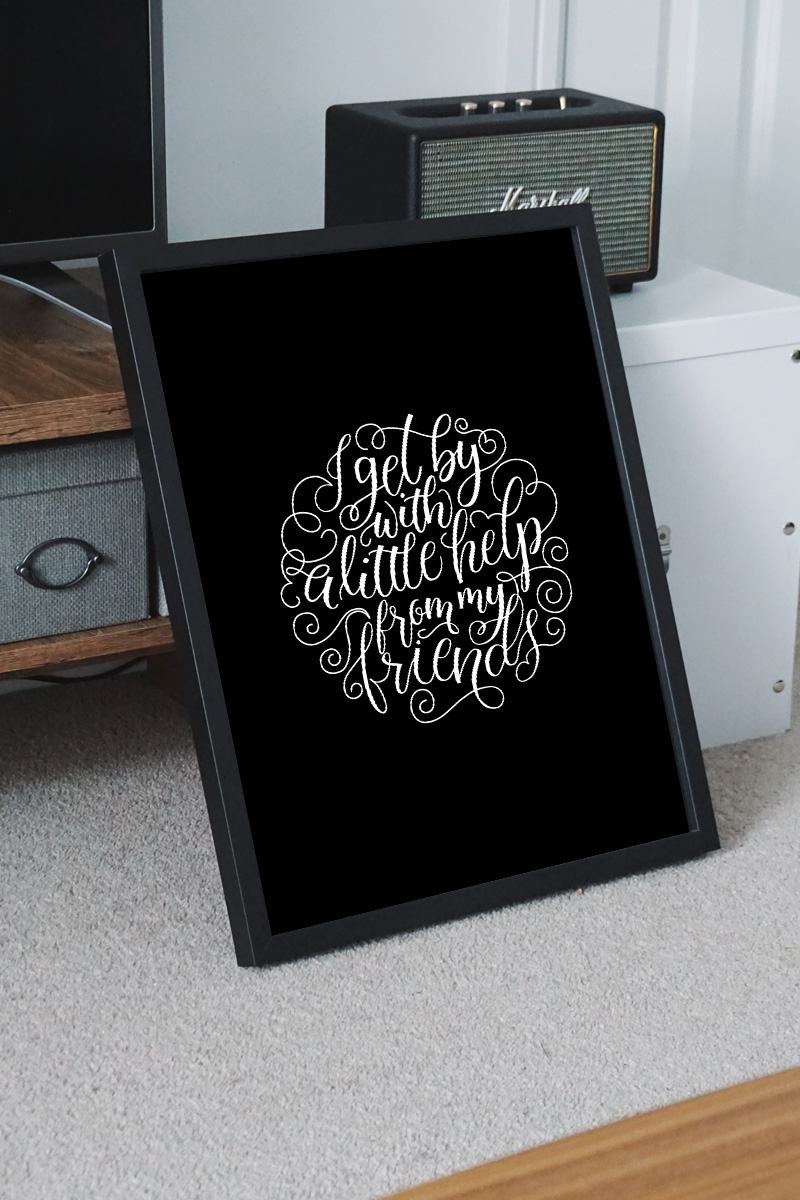
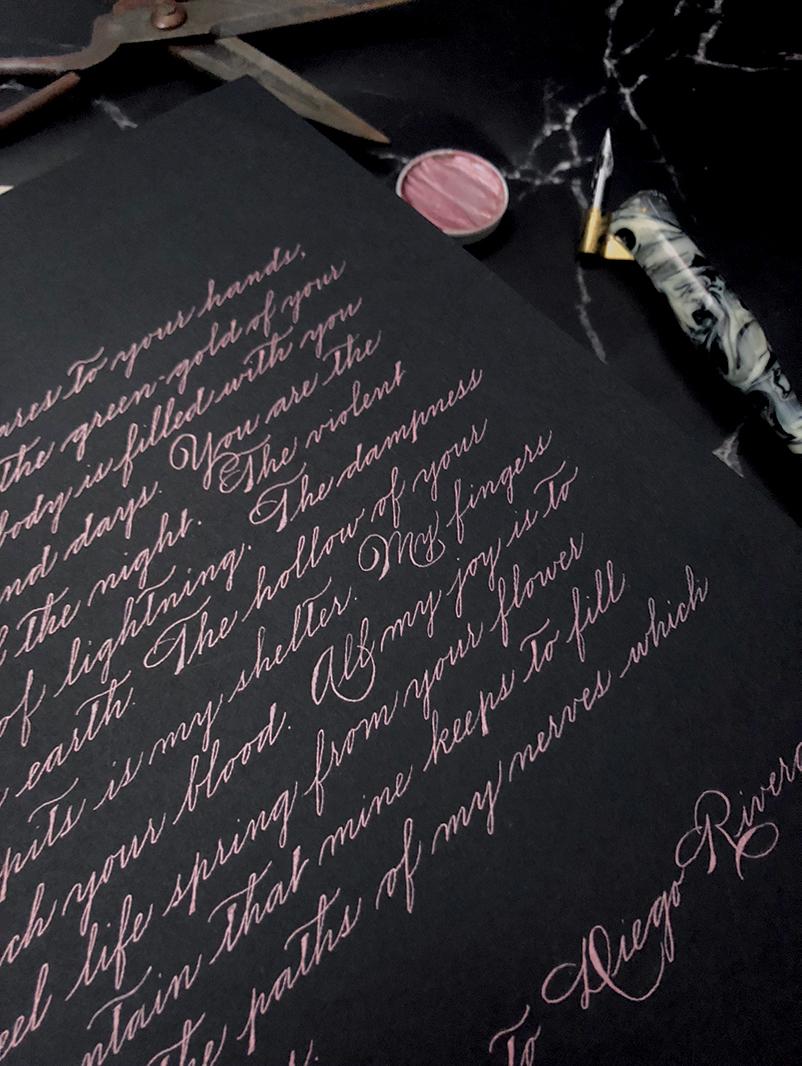



Thank you for this post and explanation on the nibs! Im a beginner and also just realized that I need to get back to basics instead of focusing on flourishes straight away
Hi Yulia! I’m glad you found this useful! It’s advisable to focus on mastering the letter forms first. Finding your own style may be challenging but really fun. Good luck on your calligraphy journey!
I can’t get ink to flow from my ef66. I’m using Sumi Ink. Any tips? I can write with my Nikko G and Blue Pumpkin just fine.
Hi Jillian, have you tried washing your EF66 with soap and water? There might still be a thin film of oil that’s why the ink won’t flow. You can also try Higgins Eternal ink. It’s slightly more watery than sumi. If you’ve tried the suggestions above and the ink is still misbehaving, you can try another EF66 and see if it works. Hope any of the above helps!
Hi Jillian, I love your post so much. i really want to know what kind of ink which you used for writing? And is it suitable for both Leonardt Steno and Nikko G? Thank you.
Hi Duong, Pauline here! I most probably used Chinese sumi ink here, as it’s the one I use almost all the time. Thanks for your kind words!
Hi Jillian! Thanks for the awesome post! I’m using the Brause Steno Blue Pumpkin and wondered how the Leonardt Steno differs from the Brause? I’m not loving the Brause, tbh, so I’m wondering if I should try the Leonardt instead!
(Whoops, sorry, I misread. You’re Pauline, of course, not Jillian! My bad!)
Just ordered all three of these because I am looking for some new nibs. thanks for the great post and the recommendations.
Hi, I’m a very new beginner to calligraphy, and am really happy to stumble on your posts, they are very helpful!
Would you recommend any or all of these 3 nibs for total beginners? Also would I be able to fit the Nikko G nib into a Brause holder?
Hi Siok-Hoon! For beginners, the Nikko G would be best. Once you get the hang of it, you can then try the more flexy Brause nibs. 🙂
Hi!! What oblique holders would you recommend?
As a beginner, I got myself a century oblique from Paper and Ink Arts. Very affordable and I used mine all the time. Now my favourite is the one I ordered from Heather Held. Very lightweight and a beauty to look at. 🙂